London: These are epoch-making times. Literally. We are living at an exciting stage in our planet’s 4.5 billion year history; Earth is crossing a geological boundary and we humans are the changemakers.
Geologists are calling it the Anthropocene, ‘the Age of Man’, recognising our species’ ascent to a geophysical force on a par with earth-shattering asteroids and planet-cloaking volcanoes. How we choose to wield this force may determine not simply our own survival, but that of life on Earth.
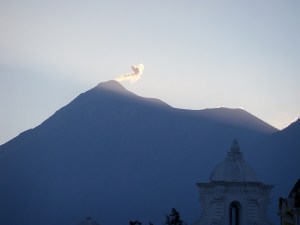
“We don’t know what is going to happen in the Anthropocene – it could be good, even better,” says geographer Erle Ellis of the University of Maryland. “But we need to think differently and globally, to take ownership of the planet.” In other words, we need to face up to our god-like responsibility over other life on Earth – and the survival of our species.
I’ve been talking and writing about the Anthropocene for a few years, but until now, the term has only been used among academics. So, it’s pretty exciting to see it come of age in the mainstream press, from the BBC to the New York Times to the Economist and my article in The Guardian.
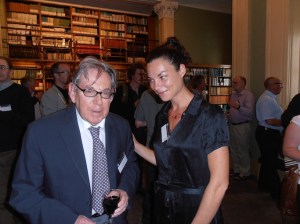
The term was conceived by Nobel laureate Paul Crutzen (who discovered the link between CFC fridge chemicals and the hole in the ozone layer) in an article published in 2002 in the scientific journal Nature (where I used to work as the news editor). Over the past decade, it has been used more and more by geologists, ecologists and biologists to describe the planet-wide effect our species is having on the Earth.
Last month, I joined Ellis and other scientists of the Anthropocene Working Group of the International Commission on Stratigraphy, which is the body charged with formally designating geological time periods, at the British Geological Society in London, where they discussed their data and whether there was enough evidence for geological change to merit a new epoch.

One by one, the scientists described human-wrought changes to the planet’s shape, biology and chemistry. From the amount of carbon we’ve put into the atmosphere by burning fossil fuels, to the amount of carbon dioxide dissolved into the oceans, which is making it more acidic. From the amount of rocky planet material we move through mining and other excavations (currently four times what is moved naturally by glaciers and rivers), to the way we are changing freshwater supplies, more than half of which is now under human management. From the numbers and abundance of species (we are likely at the start of the world’s 6th great extinction) to the way they are distributed around our planet, from invasive species to forests and farmland (there are more trees in agricultural zones than in forests). From the energy we produce (likely to exceed that released by tectonic activity within 50 years), to the way we distribute nitrogen from the stable-bonded atmospheric version to the reactive chemical we make in fertilisers and through burning fossil fuels….

As the scientists of the working group stood in front of their slides – all of which showed graphs whose lines went from Holocene-stable flat, sharply rising towards the vertical after the 1950s – the message was clearly stated: humans have so changed the planet that our effects will be seen in the fossil record as far away as 10 or even 100 million years time. Millions of years from now, alien geologists would be able to make out an Anthropocene stripe in the accumulated layers of rock in the same way that we can see the dinosaur prints of the Jurassic, or the explosion of life that marks the Cambrian.

It takes a psychological leap to understand that we are having a planetary effect of this magnitude; that the Earth beneath our feet is no longer as impervious to our mortal lives as we thought.
The last time we passed a geological boundary some 12,000 years ago, we were a pretty insignificant species – just one of a couple hominids struggling to survive in a world where so many of our cousins, like Homo erectus, had failed to make it. The global warming event at the end of the last ice age, which marks the epochal crossover from the Pleistocene into the Holocene, was the making of us.

As our planet heated up, ice melted and the tropics became wetter. People came out of their caves and began taking advantage of the new conditions: grasses proliferated and those with nutritional seeds, like wheat and barley, could be farmed. Around the world, people began settling in larger communities and processing food rather than simply hunting and gathering. This stability led to the development of culture and civilizations – our species became more populous and so successful, we spread across six continents.
We have always made some local impact on the natural world we live in, but sometime within the last couple of generations, our scope changed. The industrial revolution increased our ability to ‘own’ nature, and in the years after WWII, human beings became so influential that we are altering the very geology of planet Earth on a global scale.

Our species more than doubled in population since 1950, meanwhile, extinctions in other species are happening as much as 1000 times faster than normal Holocene levels, accumulating in what many believe will be the planet’s sixth great extinction. This would show up in the fossil record not only by the absence of, say, Yangtze river dolphins, and the sudden presence of non-indigenous creatures in new places, such as lemurs in Richard Branson’s Caribbean island, but also in its lineage effects.
“Ten million years in the future, descendants of species alive today will show evolutionarily derived distinctions – we trace the origins of these using the fossil record,” Zalasiewicz says. “If a species becomes extinct, then there are no descendants, that line dies out, altering the ecosystem accordingly.”
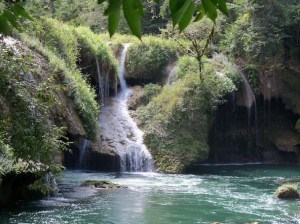
Humans are engineering such changes not only to individual species, but to entire landscapes. Using his most conservative estimates, Ellis, who is a member of the working group, calculates that 75% of the globe’s terrestrial ecology has been modified by humans. Deforestation fells 80,000 km2 a year, and desertification and agricultural changes will also show up on the fossil record.
And that’s not all. Rivers have been rerouted and dammed, with more than three times as much freshwater now in reservoirs than rivers and lakes, irrevocably altering siltation patterns. Islands are sinking under sea level rise, mountains are being scarred by glacial melt and carved up by mining projects. Under average Holocene conditions, each year, around 10 billion tonnes of sediment makes its way from the mountains to the oceans via rivers and glaciers. Humans now shift around double that every year through mining projects and other extractions for building materials.
This is not the first time a single species has transformed the planet – cyanobacteria take that gong for oxygenating the atmosphere some 2 billion years ago – but it has taken the self-aware fourth ape to knowingly do so.

We have changed the planet for the benefit our our species: we now live longer and in greater numbers than ever before. We have exceeded natural limits to improve our species’ survival and quality of life. For example, modifying the nitrogen cycle by creating artificial fertilisers has allowed us to produce bigger and better crop harvests by overcoming the time it takes for plants to fix nitrogen out of the atmosphere. Damming rivers and lakes has given us secure access to freshwater outside of the natural rainy seasons. And unleashing the enormous calorific value of fossil fuels from coal to oil has allowed our species to move around our entire planet in a matter of hours. We have become a truly dominating force – we have taken over our world.
Now, we will need to use our unmatched intelligence to to continue to shape the planet for our own survival. But we will have to solve energy and resource crises in new ways, acting within planetary boundaries to preserve Earth as a safe operating space for humans. Just as we don’t have to die from various diseases that killed our ancestors, now that we can intervene medically, so we also don’t have to experience ice ages, for example.
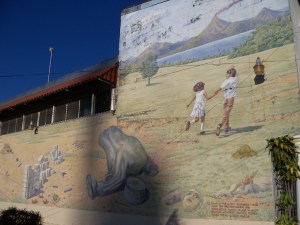
In a special issue of the journal Nature, in September 2009, a group of scientists laid out what they believe to be the 9 ‘planetary boundaries’ – biophysical thresholds – that must not be crossed in order to preserve our human species. They include an intact ozone layer, limiting ocean acidification (or pH) and stabilising climate change (global temperatures and atmospheric carbon). Three of these ‘boundaries’ have already been crossed, the scientists warn. For example, atmospheric carbon is now at a dangerous level and likely to provoke a catastrophic tipping point. As one of the scientists points out: “We haven’t figured out a way to refreeze the Greenland ice sheet.”
One way we might be able to test our skills at surviving a much changed planet is through a game called Fate of the World, which is described here, and looks pretty fun.

At the end of 2008, I set off on a journey to explore the world at this exciting time in its history, to meet the people already living under many of these impacts – to tell the story of the new Anthropocene. I’ve brought you tales of dams and mines, of floods and drought and melting glaciers. And I have discovered just what a resourceful, resilient and ingenious species we are.
I’ve been a bit neglectful of Wandering Gaia recently, sorry about that. But I’m back at my desk now and I’ll resume my posts. Who better than Gaia, the Goddess of the Earth, to bring you the latest from the Anthropocene?

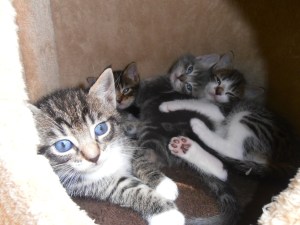
Even though we are descended from gods and goddess, we are only children who are in a great flight away from reality, destroying the majority of things we come into contact with. If we can stand still and deal with the grief of what has occurred, we might be able to heal our trauma that has brought us to this point where we fool ourselves into believing that technology will save us.
Good overview, but we’re only considering an “Anthropocene” because stratigraphers made an earlier error in naming a “Holocene”.
To me, we’re living in the Pleistocene Terminal Event.